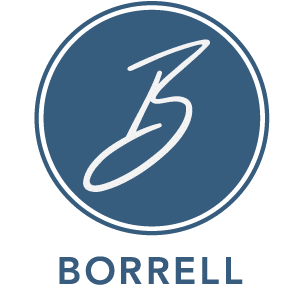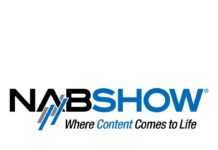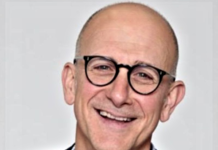
Borrell and Associates has just released its annual Local Advertiser Survey in which over 3,500 small businesses were surveyed about their advertising plans. The study includes information on which media an advertiser might cut or add, which media advertisers consider to be hot, how they use digital, and of course, how radio fits into that equation. The results showed that advertisers still use newspaper, digital is their number one choice, and events are huge.
Here are the bullet-point highlights of the study, followed by our interview with Gordon Borrell, in which we dig deeper into what he discovered this year.
➢ Most marketing decisionmakers are novices
➢ Newspapers are 2nd most prevalent ad buy, behind digital
➢ Social Media is popular, but gets only 4% of ad budgets
➢ Social Media & TV are “most effective” media
➢ 57% are increasing digital advertising expenditures
➢ Among traditional media, radio & direct mail fare best for increases
➢ No single marketing challenge dominates, but ROI is highest on list
➢ 68% of advertisers engage in email campaigns
➢ 97% participated in an event; 48% sponsored one
Radio Ink: Tell us about the advertiser study you just released.
Gordon Borrell: It’s important to note that these responses aren’t representative of ALL SMBs. They’re just the important ones — those who are actively buying advertising today. We solicit responses annually to lists of those actively advertising. It’s the largest survey of local advertisers in the country. We conduct it every April-July. We also conduct a monthly panel of 2,000 local advertisers who are recruited from that annual survey. This year we asked the standard questions — what’s being cut, what’s hot — so we could benchmark the change. But the really interesting stuff we went after was everything around the hottest marketing issues of all — social media and all these digital services they’re buying.
Radio Ink: Did it surprise you that most decisionmakers were novices?
Gordon Borrell: Yes, actually. We thought, like everyone else, that marketing decisions were being made by fulltime marketing people at companies. In reality, they’re being made by people who have other titles, like owner or secretary or general manager. The lure of social media now has these novice marketeers spending, on average, about nine hours a week on marketing.
Radio Ink: Why is newspaper still so high on the list of advertisers after so many years of a downward spiral for that industry?
Gordon Borrell: Because at the end of the day, advertisers still prefer something tangible…and because print actually still works pretty well. It’s ranked No. 2 in terms of driving new business, behind social media. It’s also a very powerful medium for distribution of circulars (coupon flyers). When a Walmart flyer is distributed in the local paper, sales for just about everything advertised in that flyer increases.
Radio Ink: Are advertisers telling you they are getting results from digital?
Gordon Borrell: Yeah, but we’re sensing that the John Wanamaker syndrome is at play right now with digital. They’re thinking, “Half my digital advertising works and half doesn’t, and I don’t know which half is which.” We’re seeing a lot of channel switching within digital — particularly away from banners ads and Paid Search toward more effective things like SEO or social media.
Radio Ink: Which digital products are the most effective?
Gordon Borrell: They’re rating Facebook extremely high for effectiveness at the moment. For certain types of advertisers like Real Estate or B2B categories, LinkedIn is remarkably high in effectiveness. To some extent, so is hypertargeted banner advertising. But I think things might catch up with social media in a year or two, when advertisers realize that the vast majority of “likes” are from Bejing or Bulgaria.
Radio Ink: Looks like events are huge. Why?
Gordon Borrell: It’s pretty simple. Advertising is typically done behind a veil, and buyers are skeptical of all those listeners, readers, and viewers that their commercial supposedly reached. An event puts them in front of real live people. There’s another reason they’re getting bigger. There are a lot more of them. Loads of media companies, especially newspapers, have discovered that events can fetch millions of dollars of new revenue, often with 50% margins, every year.
Radio Ink: Why does radio fare best for an increase?
Gordon Borrell: Two things are at play. Radio is relatively inexpensive, and radio conveys excitement better than print or digital media can. I also think there’s enough evidence to say that radio does a great job of driving an advertiser’s digital goals, like website traffic, contest entries, or Facebook “likes.” Because most advertisers seem to be obsessed with digital media, radio sellers would be well-advised to go in talking about an advertisers’ digital goals and lead the conversation into how radio spots can help achieve them.
Radio Ink: Taking in all the data collected, what advice do you have for radio and radio sellers?
Gordon Borrell: My voice to radio managers is to pay attention to that rookie level of expertise and the advertisers need and desire to work with social media. If they can come in at that angle they will have the advertisers’ hearts and minds. Help them understand how much time and money they are spending, and probably wasting, managing all this stuff themselves. Radio people tend to be expert marketeers. Radio to the rescue!
Radio Ink: What was your biggest takeaway from the study?
Gordon Borrell: Biggest takeaway was that advertisers are now spending huge amounts of time on social media and all other forms of digital media, yet they are really inexperienced. They desperately need help. That is so clear in the surveys.






Expert Marketeers…Never!
“Radio people tend to be expert marketeers.”
WTF? When did this happen?